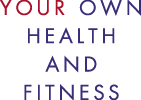Science is about the truth, isn’t it? It is—and much, much more.
Last week I commented on the science that’s been coming out of the Women’s Health Initiative, science that seems to show that beliefs deeply held by conventional health experts are wrong. This week the media carried front page stories about “what it all means.”
The word got out fast on these studies about the effect of low-fat diets, calcium, vitamin D, and hormones on women’s health. The researchers worried that women would lose faith and stray from the path of conventional science. Part of the blame, they said, was that people wanted certain and simple answers and that these studies just weren’t like that. And so, despite their own findings, the researchers pronounced that women should still heed the conventional health advice. Meanwhile, critics took potshots at the researchers for grasping at straws using inappropriate methods.
This was unusual. It’s common for journalists to trot out conflicting scientific views in the now-familiar he-said-she-said style of reporting. What happened last week was about how science is done. But it was only a peak behind the curtain. How science is done, and what gets done with it, goes much, much further.
The way I learned science, it’s about testing a hypothesis. A hypothesis is an educated guess about how the world works. Testing it is about using what you know to make something happen that will show whether you guessed right. The WHI researchers guessed wrong.
Educated guesses don’t fall from the sky. The WHI researchers get by with a little help from their friends. Actually, a lot of help from their friends. These would include fellow experts who reporters rely on to place the story in context, fellow experts who, for example, see no difference between pharmaceutical and bio-identical hormones or don’t regard a hunter-gatherer diet as worth studying.
The help goes beyond drawing a boundary around what is and is not respectable science. Friends include the government agencies that establish and enforce nutrition and other standards based on respectable science and communicate those standards to the public and health professionals. Friends include health professionals who set their own standards and reinforce conventional beliefs by communicating among themselves, with patients and clients, the general public, and citizen groups organized around health issues. Friends include citizen groups that advocate for and advise women (and men) based on conventional science. And let us not forget friends in business who produce their own science, fund science by others, prefer certain results, prefer that certain questions not be asked, and have their own way of communicating with government, professionals, citizen groups, and you and me. This society of friends creates a culture, an atmosphere of knowledge limited to the canon of conventional science that works from the top down.
Top-down knowledge says that women (and men, too) want answers that are simple and certain. Top-down knowledge says that scientists speak the truth.
I’m sure you’re with me in liking answers that are simple and certain. But as you and I have frequently learned during our lives, the truth is often messy. And science is, at its heart, about uncertainty as much as it is about the truth. Scientists do not speak the truth. They report on what they found out. Even the scientists you agree with.
I’m afraid that you and I have to glean what knowledge we can from those scientist’s reports and all of our other sources of information, including help from our friends, so we can make better educated guesses about our health. That is how science is about the truth. That is how your everyday life is about the truth. Knowledge from the bottom up.
The issues in this article are developed (with references) in issue #4 of the Progressive Health Observer in a review article titled “Fit to Print? A review of The Truth About the Drug Companies and Critical Condition.”
Related resources are available on the Health Politics page.

